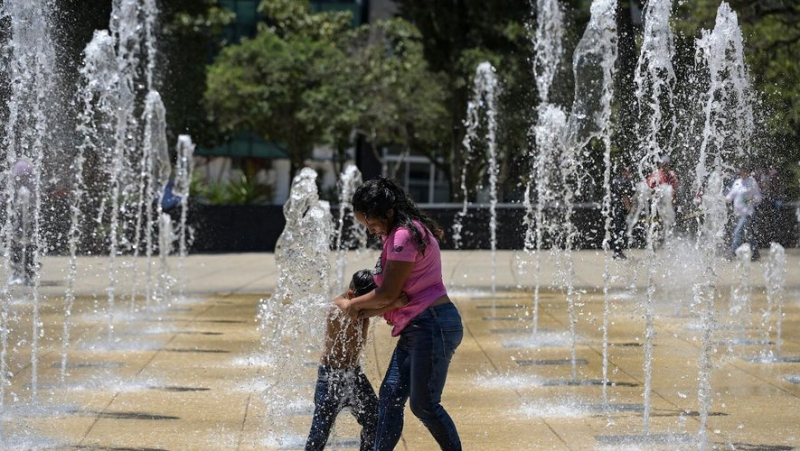“It can literally be deadly”: one in 5 children experience at least twice as many days of extreme heat as 60 years ago

Extreme temperatures can impact children's neurodevelopment and mental health, and make them more vulnerable to diseases such as malaria, warns UNICEF. Yuri CORTEZ/AFP
One in five children worldwide are experiencing at least twice as many days of extreme heat as they did 60 years ago, UNICEF warned Tuesday, calling for protection from temperatures that can be deadly to the most vulnerable organisms.
As a result of climate change caused by human activities, 2023 was the hottest year on record and 2024 could set a new record.
In this context, UNICEF has looked at one of the impacts of this warming, extreme heat, in particular the number of days exceeding 35 °C each year, by comparing the average for the 1960s with that for the period 2020-2024.
As a result, "one in five children now experiences twice as many days of extreme heat as their grandparents did 50 or 60 years ago, and this trend empire", Lily Caprani, head of advocacy for the UN agency, explains to AFP.
That represents nearly a billion children (466 million according to data published Tuesday) on all continents, even if some regions are particularly affected.
Thus, in West and Central Africa, 123 million children (39% of children in this region) live more than a third of the year above 35°C, with peaks of 212 days in Mali, 202 in Niger, 198 in Senegal, 195 in Sudan. "This heat is dangerous for anyone, but especially for young children", Lily Caprani points out.
"The bodies of young children are not simply small adults. They are much more vulnerable to extreme heat, their hearts beat faster, they breathe faster”.
And for a baby who doesn't sweat like an adult to regulate their temperature, “this can literally be deadly”, she warns, also drawing attention to the dangers to pregnant women and the babies they carry.
These extreme temperatures can also impact children's neurodevelopment and mental health, and make them more vulnerable to diseases such as malaria, warns UNICEF.
Stifling schools
Not to mention the difficulties of learning in stifling classrooms. “In the first months of 2024, at least 80 million children have already lost school days due to school closures due to extreme heat”, says Lily Caprani, estimating that the figure is likely much higher.
The data also shows that in 100 countries, more than half of children experience twice as many heatwaves (at least 3 days of high temperatures) as they did 60 years ago, which represents, for example, 36 million children in the United States.
So UNICEF is calling for action. To limit the impacts by teaching parents to spot the signs of heatstroke, by training health personnel to treat them in emergencies, by investing in air conditioning systems in schools — a solution that unfortunately many countries cannot afford.
But above all, to slow down global warming on a planet where even higher temperatures, above 40°C, or even up to 50°C, are increasingly common.
While the countries that signed the Paris Agreement must submit new greenhouse gas emission reduction targets by early 2025, "they can do so with ambition and knowing that today's children and future generations will have to live in the world they leave them”, argues UNICEF boss Catherine Russell in a press release.
These children who will inherit this damaged planet are the least responsible for the climate change they are experiencing. “Yet most climate policies do not even mention children”, deplores Lily Caprani.




